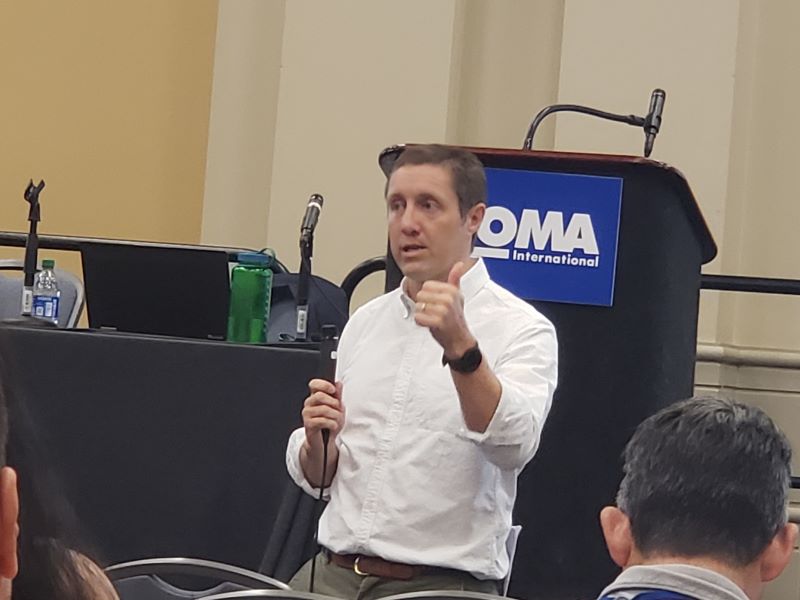BOMA 2024 Special Report: When Property Management and Asset Management Meet
What are the best ways to bridge the gap between the two professions?

That question could sum up a central issue raised Tuesday on the final day of BOMA International’s annual conference in Philadelphia. During a lively town hall-style event led by Matt Lexow-Gray, vice president of data operations at Lobby CRE, professionals shared strategies for meeting the changing needs of asset managers and owners.
Thinking strategically has long been part of the property manager’s job description. That was clear from the session’s title: “The Future of Commercial Real Estate: We Are All Asset Managers.”
Yet property managers often feel that they are locked in a silo separate from asset managers, despite their common interest in property performance. For example, property managers often aren’t involved in the modeling and forecasting.
READ ALSO: Why Resilience Strategies Are a Must
Finding a seat at the table is the best way to understand those issues. In those cases, it’s up to the property manager to take the initiative. The goal, Lexow-Gray said: “Make your asset manager’s job easier. Find out what you can do for them.” He suggested framing the question to asset managers as, “We want to be better property managers for your assets. How can we do that?”
And if the asset managers still seem resistant, an audience member suggested initiating a conversation with the asset manager to find out why they’re reluctant.
Nuts-and-bolts management challenges
In addition to addressing the property manager-asset manager dynamic, session participants offered tips for working with tenants on nuts-and-bolts issues.
One consequence of tenants’ growing preference for shorter leases is that it complicates the timing and potential amortization of improvements, especially when those upgrades offer the tenant a benefit. The dilemma: Whether it’s better to make the investment soon, with the potential to amortize it to the tenant—or defer it, while also possibly losing the opportunity for amortization if the tenant leaves.
Moving forward can be a more attractive choice when the tenant has buy-in, participants suggested. Landscaping is a good example; it’s possible to amortize those improvements if the tenant sees a benefit to their business and knows what they’re getting. Involving the tenant in the discussions about upgrades can make it happen.
One concern that emerged from the audience is finding middle ground between shouldering the sole financial responsibility for upgrades, and asking for so much that the tenant is priced out of the market and leaves the property.
Decision-making in any aspect of managing assets is often a balancing act. When addressing issues, Lexow-Gray recommended adopting the four-step approach introduced by Col. John Boyd of the U.S. Air Force: observe, orient, decide, act (often called OODA).
The session leader also recommended that property managers stay current on four areas affecting asset management: operations, debt, equity and entity-level strategies. On the operations side, a snap survey showed that 95 percent of those at the session are more concerned about expenses than about revenue; as one audience member observed, revenue has failed to keep up with costs. Inflationary pressures are driving up expenses for maintenance, insurance, taxes and other areas.







You must be logged in to post a comment.